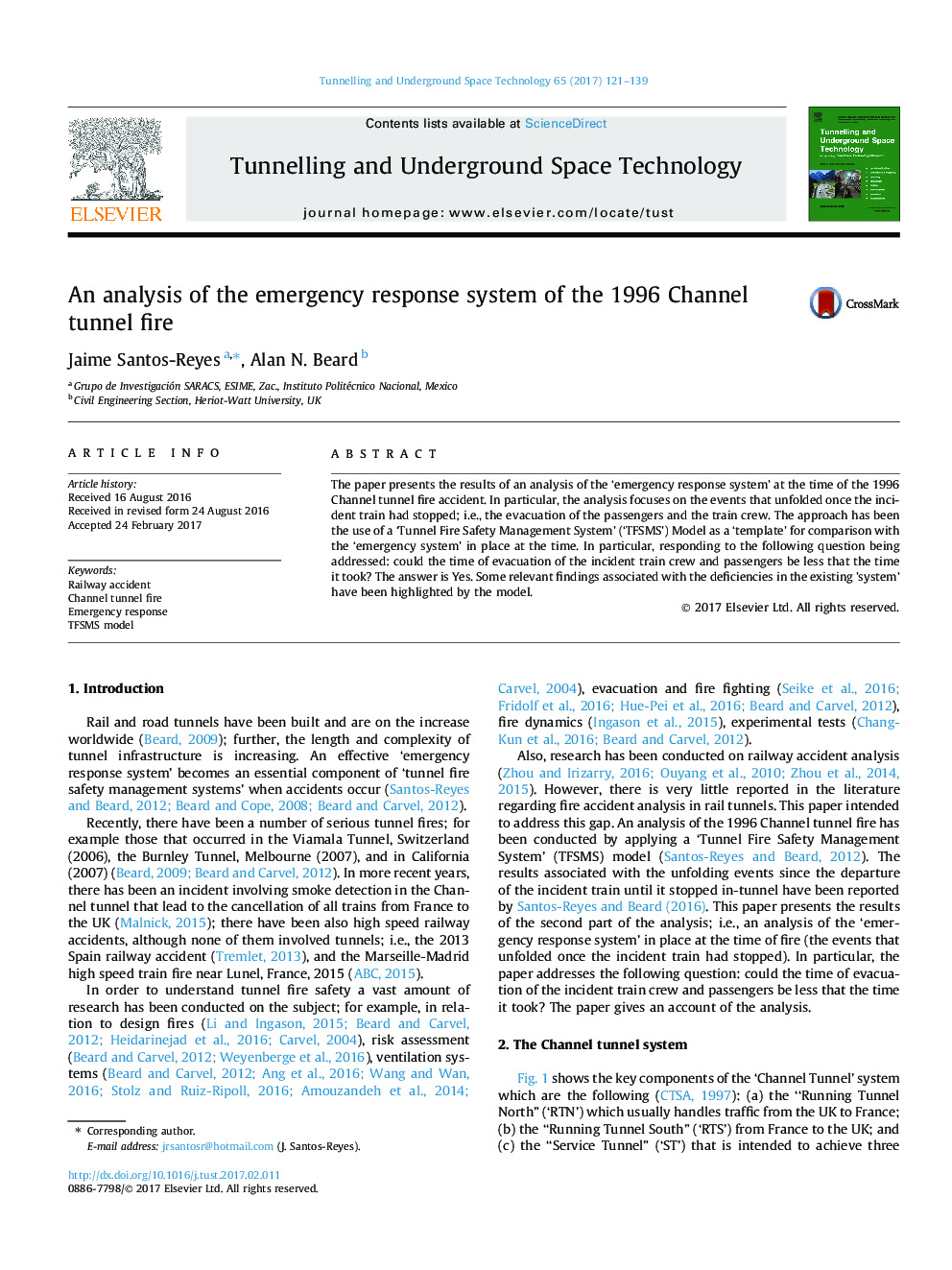| Article ID | Journal | Published Year | Pages | File Type |
|---|---|---|---|---|
| 4929265 | Tunnelling and Underground Space Technology | 2017 | 19 Pages |
Abstract
The paper presents the results of an analysis of the 'emergency response system' at the time of the 1996 Channel tunnel fire accident. In particular, the analysis focuses on the events that unfolded once the incident train had stopped; i.e., the evacuation of the passengers and the train crew. The approach has been the use of a 'Tunnel Fire Safety Management System' ('TFSMS') Model as a 'template' for comparison with the 'emergency system' in place at the time. In particular, responding to the following question being addressed: could the time of evacuation of the incident train crew and passengers be less that the time it took? The answer is Yes. Some relevant findings associated with the deficiencies in the existing 'system' have been highlighted by the model.
Keywords
Related Topics
Physical Sciences and Engineering
Earth and Planetary Sciences
Geotechnical Engineering and Engineering Geology
Authors
Jaime Santos-Reyes, Alan N. Beard,
